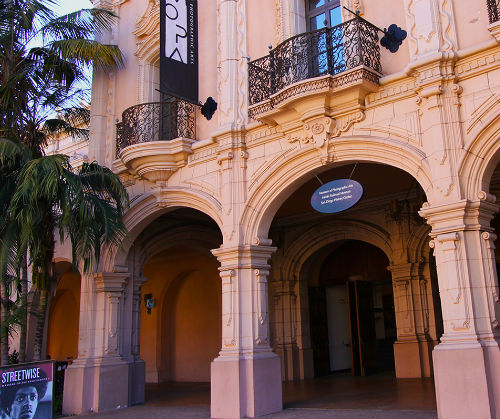When most people think of innovation, their minds automatically wander to technology. While technology does undeniably play a large role in how museums drive innovation, there are also many other ways institutions can make strides in creative and experimental ways. Looking towards membership, this aspect of museums has remained fairly inline in what it has been for the past few decades. But, as the demographics and expectations of the population continue to evolve, museums must search for ways to experiment and break away from the traditional models.
In the spirit of experimentation, let’s take a look at some examples of how museums have experimented with new membership models.
Dallas Museum of Art
Image courtesy of Dallas Museum of Art
Leading the new wave of innovative membership practices amongst other facets, back in 2013, the Dallas Art Museum rolled out their much celebrated “DMA Friends” program. This program was centered around the museum’s high-stakes strategy to offer a free membership program in exchange for visitor data. The museum describes this program as “a free, optional program that encourages and recognizes visitor and DMA Membership participation as an essential ingredient of the museum experience.” This sent waves through the museum community, as it became the United States’ first free museum membership program, and highlighted a new membership model that valued participation and used data to track (and reward!) visitor engagement. DMA Friends helped grow the museum’s membership numbers, with over 100,000 friends, making it the 4th largest membership base in the country.
Museum of Photographic Arts
Image courtesy of Balboapark.org
In May of 2015, the Museum of Photographic Arts unveiled their new, flexible membership program. This membership model aimed to “offer an alternative to traditional models and attract the upcoming museum enthusiast who wants an active, participatory role in membership.” The membership program called “MOPA Crew,” has the option of either Photography Crew or Film Crew, or an all-access pass to both. The program is also designed to also be affordable (only $5 a month, or $8 for all-access), and is intended to be both interest-based and flexible. This membership model follows in the footsteps of successful digital subscription businesses like Amazon Prime and Netflix, which both aim to deliver value to the modern consumer. This illustrates how museums are looking beyond “traditional” membership models and adapt to a younger and more diverse audience with interest-based and community-oriented membership options.
LACMA
Image courtesy of LACMA
In 2016, The Los Angeles County Museum of Art began offering “LACMA Local,” a membership option that revolved around building communities and connections amongst those they serve. LACMA aimed to create “a LACMA community and connect people to one another, with the museum as the catalyst for these connections.” The program holds events two Saturdays a month that are designed to bring people together and foster community building and connections. While the LACMA Local membership is designed to complement the museum’s “traditional” membership offering, it is ultimately a way to build stronger bonds with members and between members.
Minneapolis Institute of Art
Last year, the Minneapolis Institute of Art rolled out a new membership program as part of their strategy for long-term sustainability. This started with a complete end-to-end reimagining of what membership is in the current era, and how the museum could create a membership program that reflected this modern vision. When creating the program the museum looked to redefine what “membership” means, and how to make membership program that is both inclusive and valuable to members. As Kristin Prestegaard, Chief Engagement Officer at MIA put it, “We had to foster a personal connection to the museum that would lead to a closer sense of attachment, an unshakeable allegiance, and increased return visits.” Additionally, the museum selected uncommonly used phases such as “invest” and “investor” to reflect and instill this new ethos.
The museum followed in the footsteps of DMA and made basic membership free, but with no strings attached and no expiration date. While there are still membership options that come with a price tag, members can revert back to the free basic membership option whenever they like and will never be removed from the membership program based on lack of financial contribution.
Museum of Fine Arts, Boston
Image courtesy of NEMAnet.org
In the spirit of experimentation around a blockbuster exhibition, the Museum of Fine Arts, Boston launched a six month trial membership called the “XPass.” This program was designed around the goal to, “better understand the motivations of a younger audience demographic.” The new program was launched to complement the exhibit “Takashi Murakami: Lineage of Eccentrics,” and also included a free ticket to two MFA “Late Nite” events, hot tickets for young Bostonians.
This program underscores the various ways museums can target younger and more diverse audiences. And, XPass isn’t the only program the MFA has run to spearhead community building and inclusivity in their membership programs – in 2017, the museum began offering a free year of membership to new U.S. citizens! While these programs were designed to give potential members a taste of what a MFA membership has to offer, they point to how many museums are looking to make their membership programs more inclusive, accessible, and engaging to a wider and more diverse audience.
The Takeaways
From experimental free membership programs, to the flexible subscription models, these examples showcase just a few new ways that museums can experiment with their membership programs. With cultural organizations always looking for new and innovative ways to connect with members and visitors alike, redefining the museum membership model has proven to be a great way for museums to stay relevant, and grow their communities.
Interested in learning more about digital membership? Chat with a Cuseum expert today!






